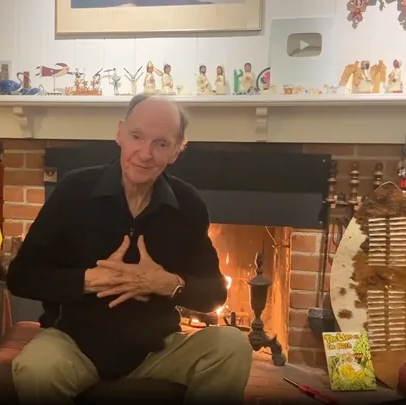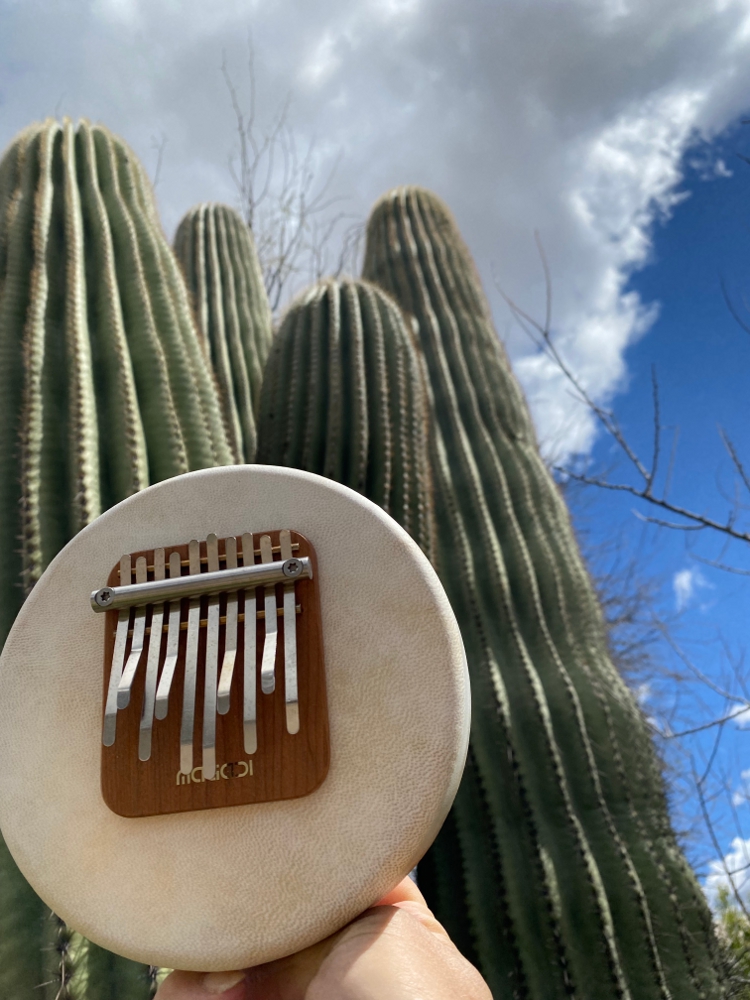
Use of this website constitutes acceptance of the Privacy Policy and User Agreement. Copyright © 2020 Kalimba Magic. All Rights Reserved.
Acquiring a second kalimba in a different tuning is almost like stepping into the exciting realm of kalimba for the first time – everything seems so fresh and new. However, unlike the first time, I come to the second kalimba with an established set of rhythms and thumb patterns I learned on the first kalimba. These patterns do transfer to the second kalimba, and it feels like I am flying.
I got my first kalimba – a Hugh Tracey Box Pentatonic kalimba – from Mark at Kalimba Magic a few years ago. I had little previous musical experience, though I had some experience with guitar and West African djembe drumming. I’ve had little musical training and have taught myself most of what I know intuitively.
When I first got my kalimba, I played it at least a half hour every day for over a year. This helped me get comfortable with the finger movements and also helped me learn what sounds were coming from which tines. I didn’t really study the lessons or try to imitate music that I knew, though that can be helpful. Rather, I just kept opening myself to find the music from within – and that music almost always came through.
Life changes followed that kept me out of the playing mood for a couple of years, but when I got back to it recently, my inspiration returned. When I got the opportunity to play a different kalimba with a new tuning, it was like exploring a whole new territory, but I felt that I had already established the basic navigating skills of the instrument. I love this second tuning – another Box Pentatonic kalimba, but in Frances Bebey’s F7 tuning. When I play this new tuning, it feels like I am drifting along on a quiet river, or playing in a lush, exotic garden.
Another good reason for me to have a second kalimba is that this second one has a pickup! Initially, playing amplified kalimba music was not even in my wildest dreams. Now it seems like an obvious next step. While being amplified, now I can imagine jamming and playing music with others – maybe I’ll be jamming with the djembes!
My experience with the Hugh Tracey kalimba has been nothing but positive. I found that it fits perfectly in a zippered, nylon book cover, which has become a very economical case. Unlike my drum or guitar, I can easily take it walking, camping, or practically anywhere. It has endured a couple years of travel without a problem or a scratch, though occasionally needing a little tuning.
It turns out a kalimba is not that difficult to tune. It can be tuned by finding the matching notes on a piano and moving the tines in or out until the pitches match, or even more easily, by using a guitar tuner. It seems a little awkward at first, but it’s really not hard at all.
The next step on my kalimba path is to explore other styles of kalimba and kalimba music. I was recently touched by the music of the African tuned karimba – I would love to learn that one next. With my renewed inspiration, I am finding the many musical possibilities of the kalimba are opening up whole new worlds for me to explore.
Have fun with your kalimba adventure! I’m having a great time!


Sign up for our newsletter and free resources with your email address:
We pinky promise not to spam you and to only send good stuff.
 Assist Paul Tracey Rebuild His House in Pacific Palisades
Assist Paul Tracey Rebuild His House in Pacific Palisades 8-Note Spiral Kalimba Turned into a Student Karimba
8-Note Spiral Kalimba Turned into a Student Karimba Seek to Infuse Your Musical Moments With Beauty and Magic
Seek to Infuse Your Musical Moments With Beauty and MagicUse of this website constitutes acceptance of the Privacy Policy and User Agreement. Copyright © 2020 Kalimba Magic. All Rights Reserved.